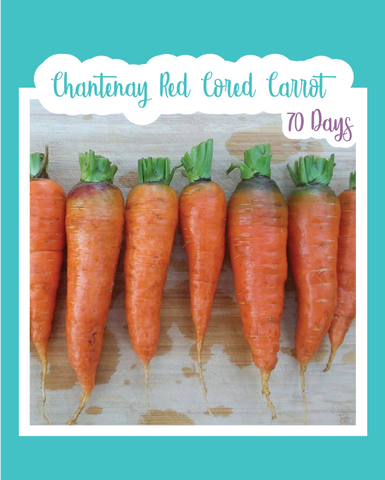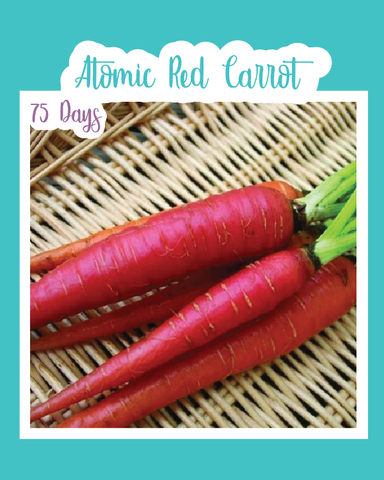
Pusa Asita Carrot
**THIS ITEM IS SOLD OUT FOR THE SEASON**
Seed Count: Approx. 100 seeds
Days to Maturity: 75 Days
Description: This heirloom carrot was developed in India and has such a gorgeous color that it's unreal. Even the leaves are ornamental with a beautiful violet hue. This carrot is so purple that it is almost black! The taste is sweet, with a slight hint of spice. These carrots are so stunning, and add a great array of color to roasted veggie dishes. In fact, the color is so rich, it even bleeds when cut, like a beet. It's also very heat tolerant, which makes the Pusa Asita a great choice for Southern gardens, however, it does taste best when harvested in the fall or winter. This carrot is definitely in my top 3 favorite carrots to grow, along with the Parisians and Scarlet Nantes, especially if you're a gardener looking for a pop of color to add to your home garden.
**THESE SEEDS CAME DIRECTLY FROM MY GARDEN AND MY BE CROSS POLLINATED**
While I do not spray my plants with anything, I can not officially offer these as organic. However, they are organically grown.
How To Grow
Sowing: Plant your seeds 2 inches apart and ⅛ to ¼ inch deep. Keep the soil moist, but do not allow the area above the seeds to become hard - this may prevent the seeds from germinating. Sow more seeds every 3-6 weeks for a continuous crop. When thinning, cut plants down. Don’t pull up the excess carrots or it may damage root systems of neighboring carrots.
Growing: When the seedlings reach 2" high, gently thin them to 2-4" apart, depending on desired carrot size. The farther apart they are, the bigger they will grow. Do not allow the soil to dry out. When the tops of the carrots begin to emerge from the soil, cover them with mulch to keep them tender. Keep weeds under control to prevent the young carrots from being stunted. For companion planting benefits, plant carrots with aromatic herbs or onions and garlic; this will repel the carrot fly and its maggots. Also avoid nitrogen heavy soils and fertilizers, or leafy tops and small roots will grow.
Harvesting: Begin gathering baby carrots when big enough to eat, to allow the remaining carrots to reach a larger size. To store carrots for the winter, twist off the tops but do not wash them. Layer them in damp sand or sawdust. In warmer climates, leave the carrots in the garden over winter topped with a thick layer of mulch. Use those carrot tops, they can be used to make pesto! To save seeds, during spring plantings, allow the top of the plant to flower; when they grow brown and dry, cut them off and allow them to fully dry. Clean to remove as much chaff as possible, then store in a cool, dry place for up to 3 years.




